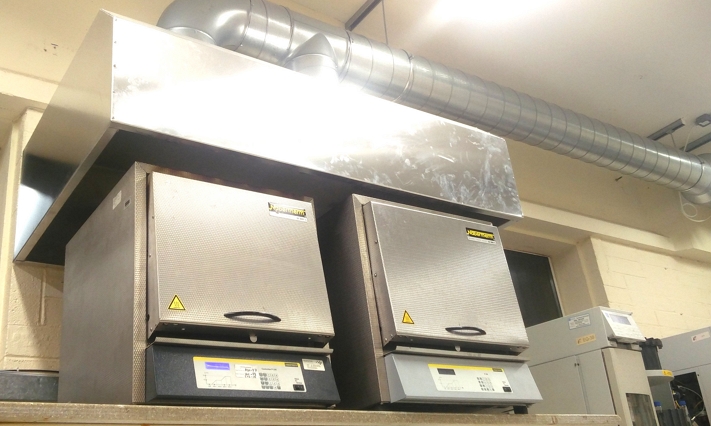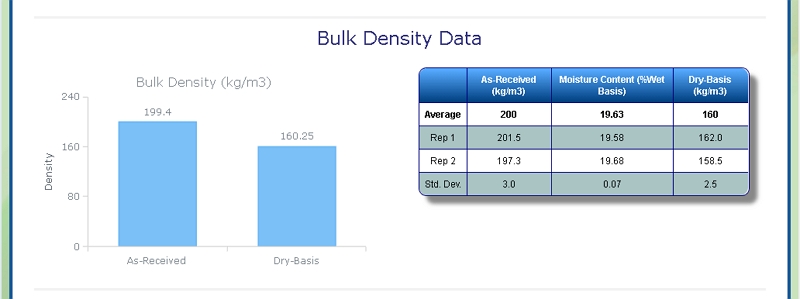Analysis of Animal Manures
Background on Animal Manures
Analysis of Animal Manures at Celignis
Celignis Analytical can determine the following properties of Animal Manures samples:
Lignocellulosic Properties of Animal Manures
Cellulose Content of Animal Manures
In general, the carbohydrate contents of animal manures are much lower than those of dedicated energy crops (e.g. Miscanthus) and other agricultural residues (e.g. straws). However glucose (primarily a cellulosic sugar) is typically the most abundant carbohydrate.
Click here to see the Celignis Analysis Packages that determine Cellulose Content
Request a QuoteCellulose Content
Hemicellulose Content of Animal Manures
Click here to see the Celignis Analysis Packages that determine Hemicellulose Content
Request a QuoteHemicellulose Content
Lignin Content of Animal Manures
Click here to see the Celignis Analysis Packages that determine Lignin Content
Request a QuoteLignin Content
Starch Content of Animal Manures
Click here to see the Celignis Analysis Packages that determine Starch Content
Request a QuoteStarch Content
Uronic Acid Content of Animal Manures
Click here to see the Celignis Analysis Packages that determine Uronic Acid Content
Request a QuoteUronic Acid Content
Enzymatic Hydrolysis of Animal Manures
Click here to see the Celignis Analysis Packages that determine Enzymatic Hydrolysis
Request a QuoteEnzymatic Hydrolysis
Bioenergy Properties of Animal Manures
Ash Content of Animal Manures
Click here to see the Celignis Analysis Packages that determine Ash Content
Request a QuoteAsh Content
Heating (Calorific) Value of Animal Manures
Click here to see the Celignis Analysis Packages that determine Heating (Calorific) Value
Request a QuoteHeating (Calorific) Value
Ash Melting Behaviour of Animal Manures
Ash Shrinkage Starting Temperature (SST) - This occurs when the area of the test piece of Animal Manures ash falls below 95% of the original test piece area.
Ash Deformation Temperature (DT) - The temperature at which the first signs of rounding of the edges of the test piece occurs due to melting.
Ash Hemisphere Temperature (HT) - When the test piece of Animal Manures ash forms a hemisphere (i.e. the height becomes equal to half the base diameter).
Ash Flow Temperature (FT) - The temperature at which the Animal Manures ash is spread out over the supporting tile in a layer, the height of which is half of the test piece at the hemisphere temperature.
Click here to see the Celignis Analysis Packages that determine Ash Melting Behaviour
Request a QuoteAsh Melting Behaviour
Major and Minor Elements in Animal Manures
We can also determine the levels of 13 different minor elements (such as arsenic, copper, and zinc) that may be present in Animal Manures.
Click here to see the Celignis Analysis Packages that determine Major and Minor Elements
Request a QuoteMajor and Minor Elements
Analysis of Animal Manures for Anaerobic Digestion
Biomethane potential (BMP) of Animal Manures
The biochemical methane potential (BMP) can vary significantly according to the type of animal, its diet, and its stage of growth. For this reason we recommend that direct determination of the BMP is undertaken in order to fully understand the potential biogas yields from your samples, rather than relying on data from the literature.
Click here to see the Celignis Analysis Packages that determine BMP
Request a QuoteBMP
Physical Properties of Animal Manures
Bulk Density of Animal Manures
At Celignis we can determine the bulk density of biomass samples, including Animal Manures, according to ISO standard 17828 (2015). This method requires the biomass to be in an appropriate form (chips or powder) for density determination.
Click here to see the Celignis Analysis Packages that determine Bulk Density
Request a QuoteBulk Density
Particle Size of Animal Manures
The biochemical methane potential (BMP) can vary significantly according to the type of animal, its diet, and its stage of growth. For this reason we recommend that direct determination of the BMP is undertaken in order to fully understand the potential biogas yields from your samples, rather than relying on data from the literature.
Click here to see the Celignis Analysis Packages that determine Particle Size
Request a QuoteParticle Size
Fruit juice processing generates large volumes of organic waste, including pomace, retentate, and waste apples, that are a challenge to manage. Anaerobic digestion (AD) allows for conversion of these wastes into biogas; however, their high acidity and low buffering capacity limits AD process stability, leading to reduced methane yield. In this study, co-digestion with manure and lignocellulosic biomass (LCB) was assessed. A five-factor mixture design was used to test different combinations on a bench scale, selected based-on seasonal fruit waste availability. Process performance was assessed based-on methane yield and volatile fatty acids before and after AD. Feedstock mixture representing an off-season blend of 20% pomace, 30% retentate and 50% manure, as well as an in-season blends of 20% waste apples, 30% pomace, 30% retentate, and 20% manure, were found to maximise the biomethane yield. Supplementation with at least 20% manure was essential for fruit waste digestion. Replacing a portion of the fruit waste with lignocellulose in the anaerobic digestion significantly improved the methane yield and prevented an “acid crash”. It was found that 30% LCB and 20% manure supplementation were the minimum required for anaerobic digestion process stability and yield for both in- and off-season fruit harvesting and processing. | ||
The ability of using novel method of near infrared (NIR) spectra to predict the composition and higher heating value (HHV) of dry pig manure was examined. Number of pig manure solid fractions variously pre-treated samples were collected in Denmark, from different pig slurry treatment plants (using mechanical or chemical-mechanical separation) and then analysed for their energy values. These values were determined by conventional method using bomb calorimetry and also calculated based on ultimate analysis. NIR spectra method was successfully applied and reasonable R2 values were obtained for the independent prediction set for nitrogen, ash, and the HHV. NIR also showed ability for predicting which type of treatment plants the samples came from. In addition, new empirical equations, based on ultimate analyses of pig manure solids used for prediction of the HHV was established. | |
The processing of lignocellulosic materials in modern biorefineries will allow for the
production of transport fuels and platform chemicals that could replace petroleum-derived
products. However, there is a critical lack of relevant detailed compositional information
regarding feedstocks relevant to Ireland and Irish conditions. This research has involved the
collection, preparation, and the analysis, with a high level of precision and accuracy, of a
large number of biomass samples from the waste and agricultural sectors. Not all of the
waste materials analysed are considered suitable for biorefining; for example the total sugar
contents of spent mushroom composts are too low. However, the waste paper/cardboard
that is currently exported from Ireland has a chemical composition that could result in high
biorefinery yields and so could make a significant contribution to Ireland’s biofuel demands. | ||


















